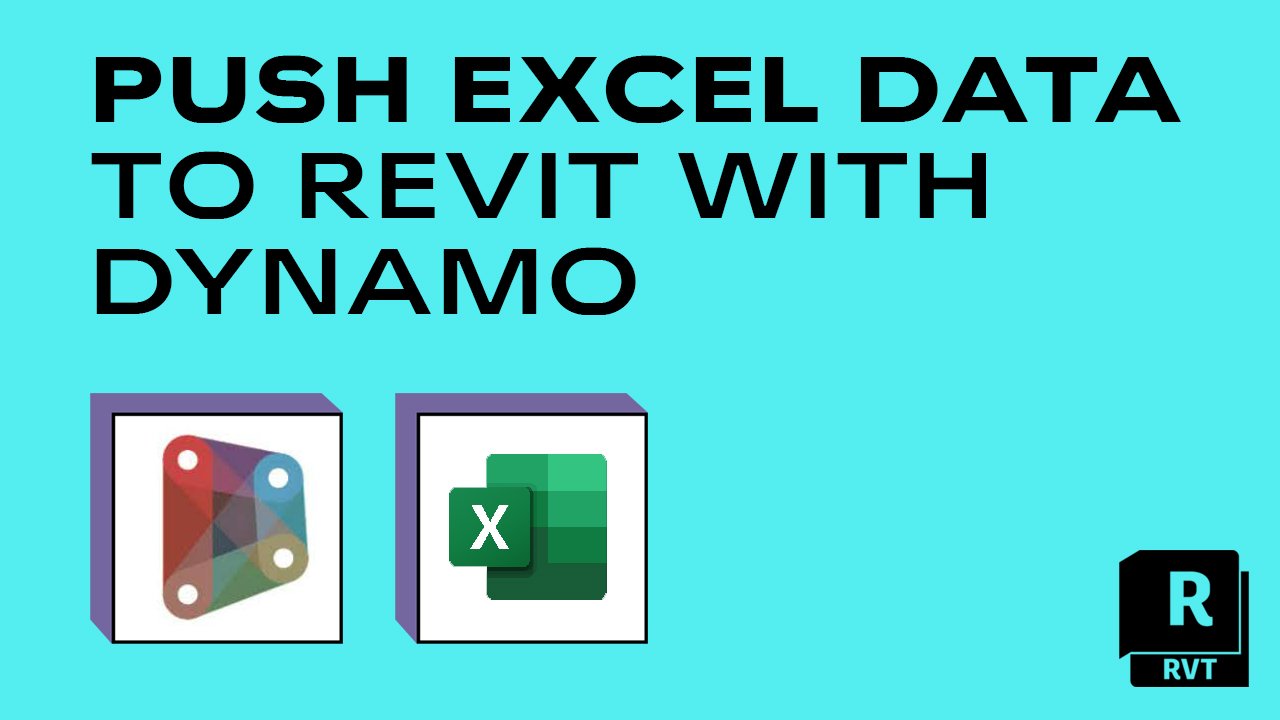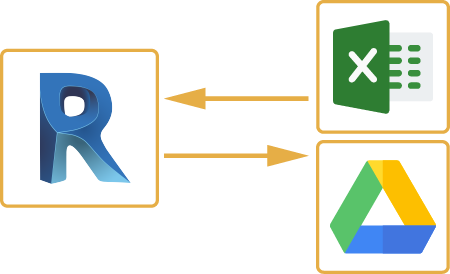Unlock New Opportunities with Innovative Revit Plugins
Wiki Article
Excel-to-Revit: A Game-Changing Workflow for Architectural Design - Unveiling the Tricks
Introducing excel-to-revit, the game-changing process that will change your design process. With excel-to-revit assimilation, you can streamline your building layout, unlock performance, and maximize cooperation within your team. Get prepared to take your building style to the next degree with excel-to-revit!The Power of Excel-to-Revit Integration

Envision the convenience of having the ability to update and modify task data in Excel, and instantaneously see those modifications mirrored in your Revit version. No extra hands-on data entrance or laborious updates. With Excel-to-Revit integration, you can save time and lower mistakes by leveraging the power of Excel's formulas and functions to immediately generate precise data in Revit.
Not only does this integration improve efficiency, however it additionally boosts collaboration among group members. You can easily share Excel data with colleagues, that can then import the information right into their Revit designs. This advertises a smooth exchange of information and makes sure that every person is working with one of the most up-to-date data.

Simplifying Architectural Style With Excel-To-Revit
Enhancing architectural design is made simpler with the usage of Excel-to-Revit (revit tools). With this powerful combination, you can optimize your operations and save valuable time throughout the layout procedure. By leveraging the capacities of Excel and Revit, you can perfectly transfer data between the two platforms, getting rid of the demand for hands-on information entry and minimizing the risk of mistakesExcel-to-Revit enables you to import and export data easily, allowing you to easily update and customize your building layouts. You can develop timetables, compute amounts, and produce records in Excel, and after that transfer that data straight into your Revit version. This integration makes sure that your layout details is always up-to-date and integrated, removing the requirement for hand-operated updates and reducing the chances of disparities.
By using Excel-to-Revit, you can additionally benefit from the powerful computational abilities of Excel. You can execute intricate estimations, analyze information, and automate recurring jobs, all within Excel. With just a few clicks, you can import the results back right into Revit, enabling you to make enlightened layout choices and optimize your architectural styles.
Unlocking Performance: Discovering the Excel-to-Revit Operations
Optimize your productivity by perfectly integrating Excel and Revit for a more reliable operations. With the Excel-to-Revit process, you can open an entire new degree of effectiveness in your architectural layout procedure. By utilizing the power of Excel's information management abilities and integrating it with the adaptability and accuracy of Revit, you can enhance your layout process and conserve valuable time.Among the essential benefits of this integration is the ability to import and export information in between Excel and Revit. This suggests that you can quickly transfer project details, such as space routines or material amounts, from one software application to the various other, getting rid of the requirement for manual information entrance and reducing the opportunities of errors. You can additionally produce customized formulas and computations in Excel to automate repetitive tasks and do intricate estimations, which can after that be seamlessly incorporated right into your Revit models.
Moreover, the Excel-to-Revit process enables better sychronisation and collaboration in between employee. With Excel working as a main data center, numerous team participants can service different facets of the job concurrently, updating and sharing info in real-time. This not just enhances interaction but additionally makes certain that every person is collaborating with the most updated information, removing the threat of incongruities.
Taking Full Advantage Of Collaboration: Excel-to-Revit for Architectural Teams
By flawlessly integrating Excel and Revit, architectural groups can substantially boost partnership and attain extra effective layout end results. When utilizing this effective operations, you can quickly move data in between Excel spreadsheets and Revit designs, simplifying the layout process and improving communication amongst employee. With Excel-to-Revit combination, you can effortlessly import project data, such as room schedules, material quantities, and project parameters, directly into Revit, removing the requirement for hands-on data entry and decreasing the opportunities of mistakes. This smooth connection enables real-time updates, guaranteeing that everybody is collaborating with the most updated details and avoiding discrepancies in between various files.In addition, by leveraging Excel's powerful calculation capabilities, you can carry out complicated estimations and analysis on your layout information, driving and providing beneficial insights notified decision-making. This integration also enables you to export data from Revit to Excel, allowing you to develop extensive records, charts, and graphs for discussions and analysis. This joint operations advertises efficient communication and control among group participants, as Excel serves as a central hub for data monitoring and sharing.
Overall, by welcoming the Excel-to-Revit workflow, building teams can accomplish greater degrees of collaboration, efficiency, and accuracy in their design procedure. revit add ins. This assimilation empowers teams to interact perfectly, making certain that everyone gets on the exact same web page and adding to the success of the job
Introducing the Secrets of Excel-to-Revit Integration

Among the tricks of Excel-to-Revit integration is the ability to utilize the power of solutions and calculations in Excel to drive specifications and generate facility geometries in Revit. You can connect Excel spread sheets to Revit households, enabling you to input data straight right into the spread sheet and have it automatically update in the Revit model. This enhances the style procedure and makes certain precision and uniformity throughout the task.
An additional secret is the capability to produce custom-made timetables and records in Excel, making use of data drawn out from Revit. This allows you to evaluate and envision project info in such a way that is not possible within Revit alone. You can easily produce amount liftoffs, cost quotes, and task timelines, giving valuable insights for decision-making and job administration.
Additionally, Excel-to-Revit integration makes it possible for efficient partnership among employee. Numerous customers can work with the exact same Excel spreadsheet all at once, making it less complicated to coordinate and track adjustments. You can likewise make use of Excel's commenting feature to offer responses or connect layout revisions.
Final Thought
By incorporating the power of Excel and Revit, engineers can now work extra revit add ins efficiently, conserve time, and produce much better styles. Begin including excel-to-revit integration into your building design process today and reinvent the way you function.With just a few clicks, you can import the results back into Revit, allowing you to make informed design choices and maximize your architectural designs.
By making use of the power of Excel's data monitoring abilities and incorporating it with the flexibility and accuracy of Revit, you can simplify your layout process and conserve important time.
By effortlessly incorporating Excel and Revit, building groups can significantly enhance collaboration and accomplish much more effective layout end results. When using this powerful process, you can quickly transfer data in between Excel spreadsheets and Revit designs, simplifying the layout procedure and enhancing communication among team members.Additionally, by leveraging Excel's effective estimation capacities, you can do complex computations and analysis on your style data, offering valuable insights and driving informed decision-making.
Report this wiki page